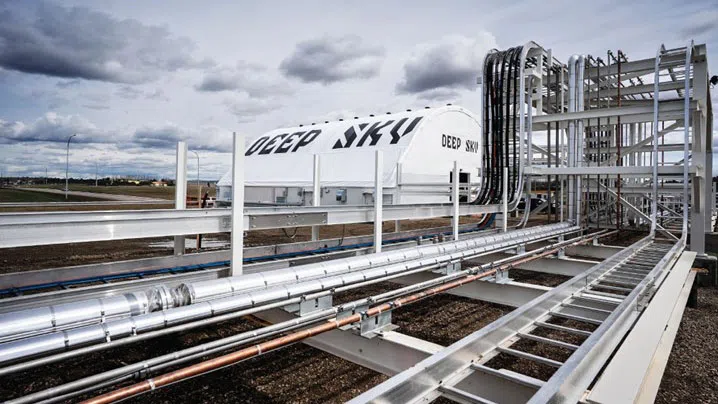
Deep Sky's Direct Air Capture pilot
Alberta invests $5 million in world-first carbon capture innovation centre
The Alberta government is investing $5 million to help build the world’s first direct air capture innovation and commercialization centre in Innisfail. The funding, provided through the province’s Technology Innovation and Emissions Reduction (TIER) fund, will support Deep Sky in designing and operating the new facility, which aims to remove carbon dioxide directly from the atmosphere.
The project will feature up to 10 carbon capture units and is expected to generate more than 80 construction jobs and 15 permanent positions. Construction is set to begin this summer, with captured emissions to be transported and stored underground near the town of Legal. The province estimates the initiative will bring over $100 million in local economic benefits over the next decade.
Unlike traditional carbon capture systems that focus on emissions from industrial facilities, direct air capture (DAC) removes greenhouse gases directly from ambient air. The Innisfail facility will serve as a testing ground for a variety of DAC technologies, aiming to capture up to 3,000 tonnes of CO2 each year.
Alberta officials say the project will support job creation, rural development and clean technology innovation. The government views it as a step forward in reinforcing Alberta’s global leadership in emissions reduction and responsible energy development.
“Deep Sky has the potential to take the next major step in decarbonization through direct air capture,” said Brian Jean, Minister of Energy and Minerals. “These advancements and investments through the TIER fund are a major reason why global demand is increasing for our responsibly produced energy products.”
According to the province, Alberta is already home to two of North America’s largest carbon capture, utilization and storage facilities, and emissions have begun to decline across sectors. The Deep Sky Alpha site, situated on a five-acre parcel, is expected to benefit industries ranging from oil and gas to agriculture and cement production.
The CO2 captured at the facility will be sequestered deep underground, with provincial regulators ensuring safe storage. The province says rigorous monitoring will protect water, plants and soil.
The project is funded through Emissions Reduction Alberta’s Continuous Intake Program, which supports clean technology initiatives using revenues collected from Alberta’s large industrial emitters under the TIER system.











Comments